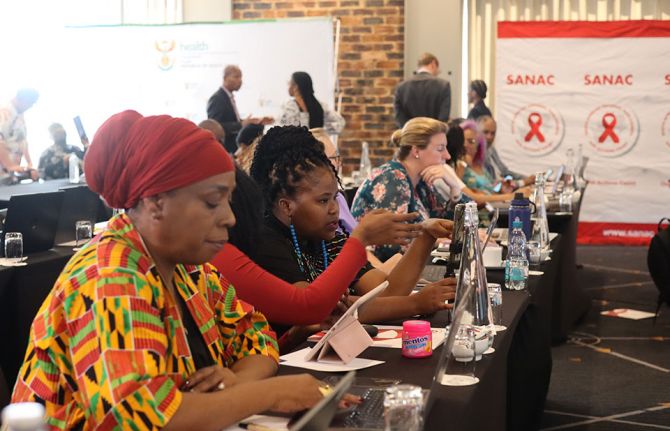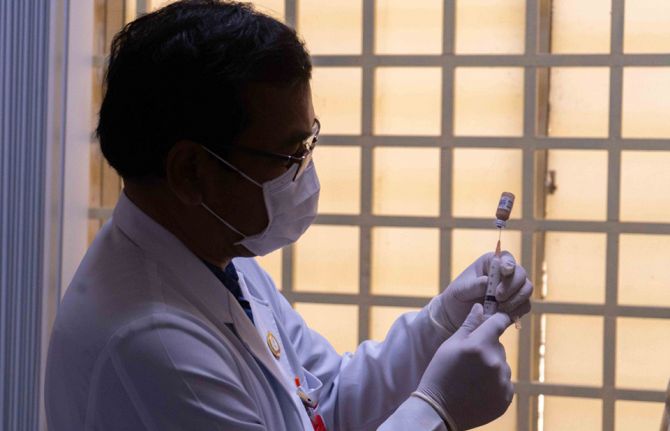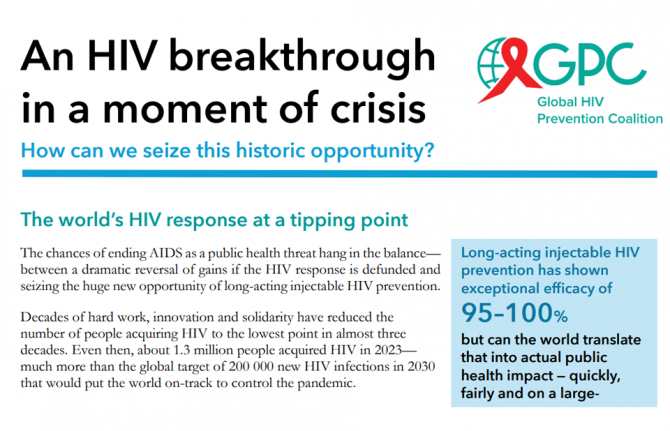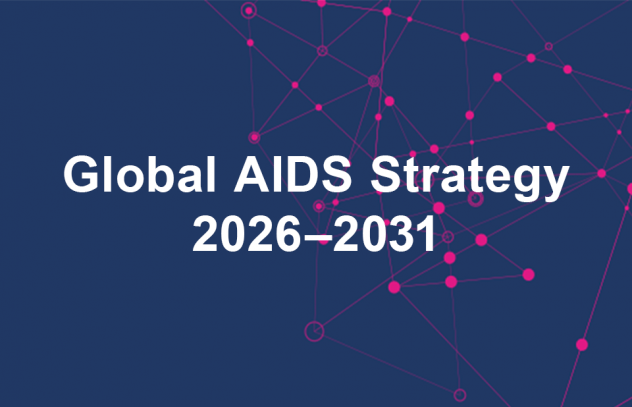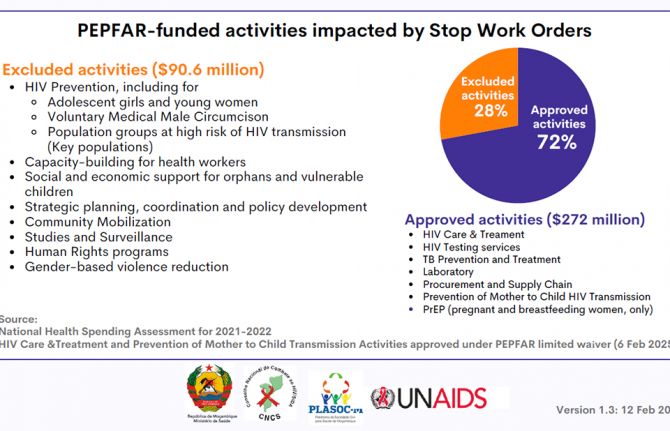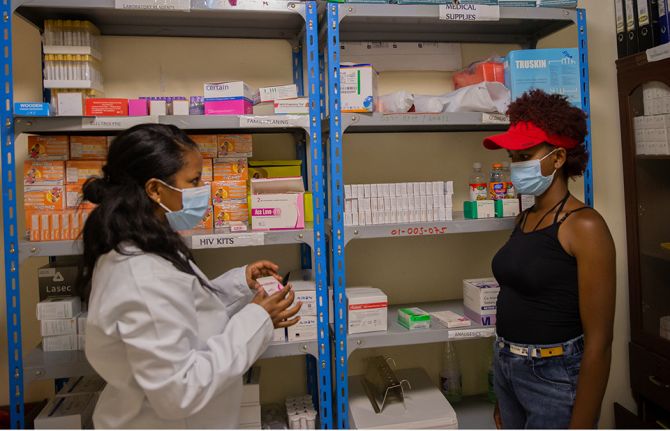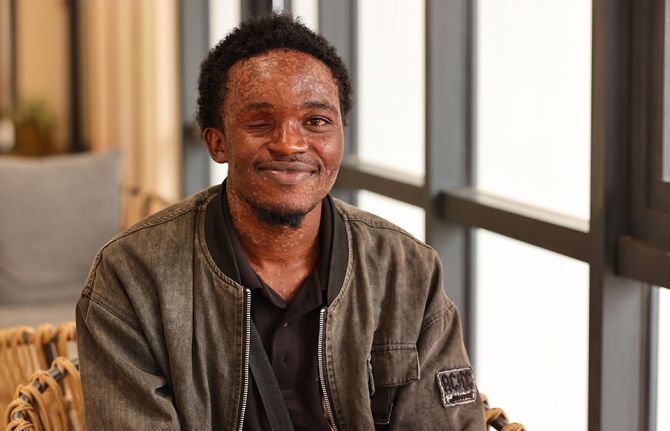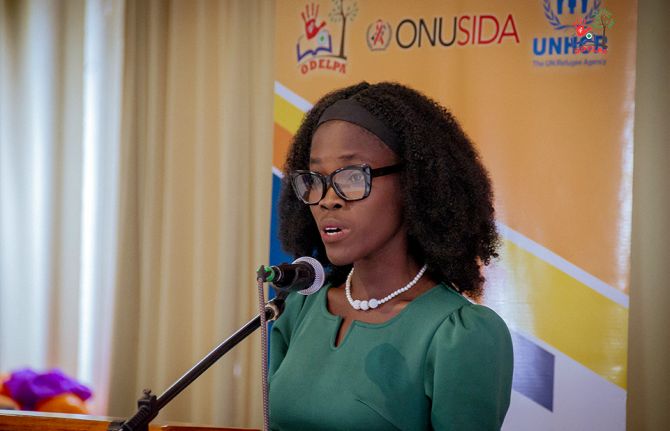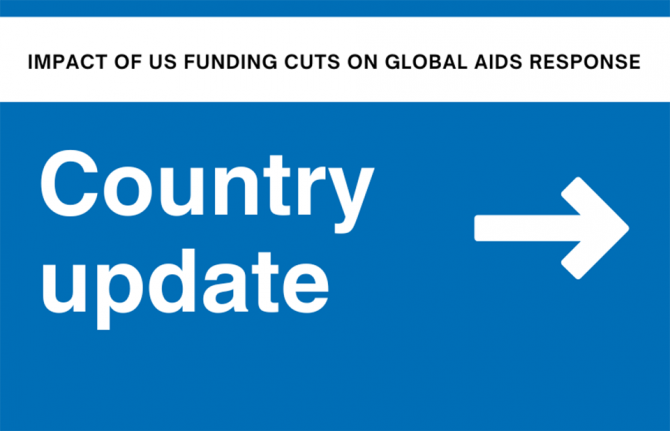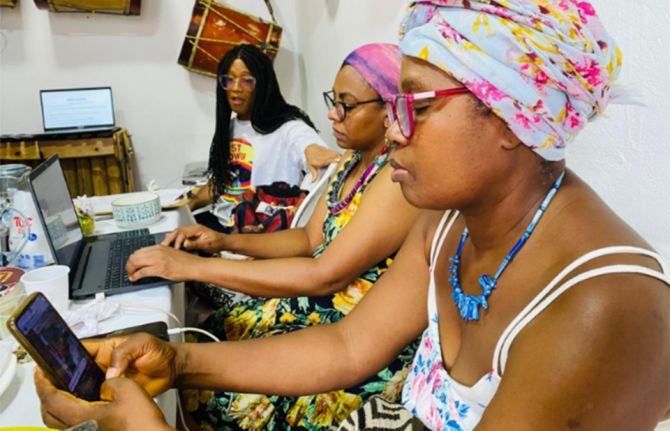
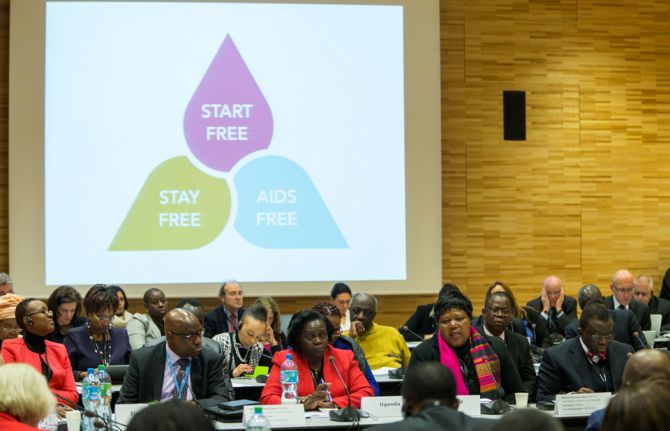
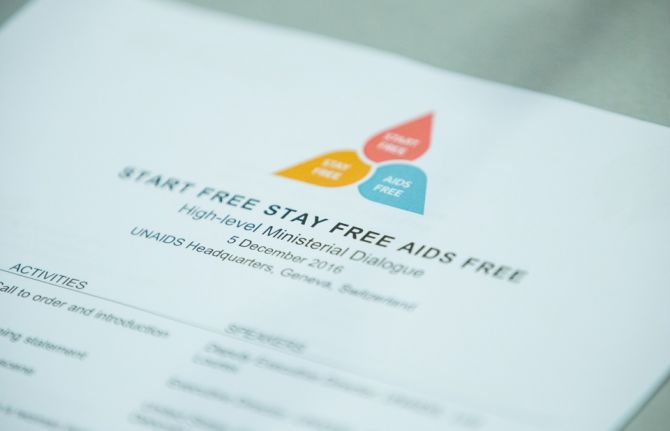
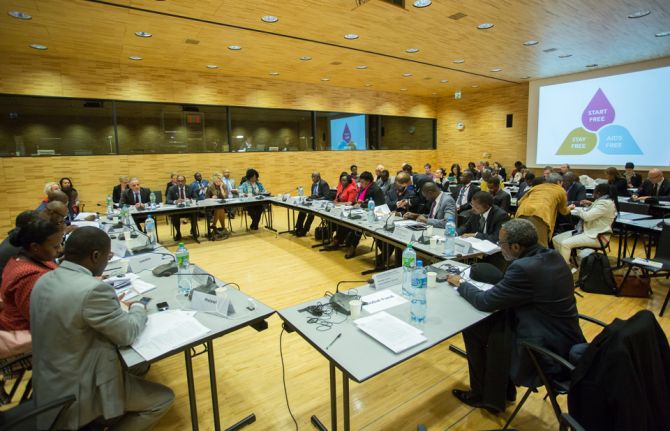
Update
Ministerial dialogue on Start Free Stay Free AIDS Free
05 December 2016
05 December 2016 05 December 2016On 5 December, health ministers from nine African countries joined UNAIDS, the United States President’s Emergency Plan for AIDS Relief (PEPFAR) and other development partners in Geneva, Switzerland, to demonstrate their leadership in ending AIDS among adolescents and preventing new HIV infections among children by 2020.
The nine ministers attending were:
- Isaac Adewole, Minister of Health, Nigeria.
- Abdourahmane Diallo, Minister of Health, Guinea.
- Bernard Haufiku, Minister of Health and Social Services, Namibia.
- Peter Kumpalume, Minister of Health, Malawi.
- Mantoetsi Liteboho Mohatonyane, Vice-Minister of Health, Lesotho.
- Sarah A. Opendi, Minister of State for Health, General Duties, Uganda.
- Salomon Nguema Owono, Minister of Health and Social Welfare, Equatorial Guinea.
- Mouzinho Saíde, Vice-Minister of Health, Mozambique.
- Sibongile Simelane, Minister of Health, Swaziland.
Representatives of the Governments of Cameroon, Kenya and Zimbabwe also participated.
The meeting, co-convened by Michel Sidibé, UNAIDS Executive Director, and Deborah Birx, United States Global Aids Coordinator and Special Representative for Global Health Diplomacy, aimed to identify the opportunities in, and possible barriers to, implementing the new Start Free, Stay Free, AIDS Free framework. The framework builds on the legacy of the Global Plan towards the elimination of new HIV infections among children by 2015 and keeping their mothers alive—which contributed to a 60% reduction in new HIV infections among children in the 21 high-burden Global Plan countries between 2009 and 2015—to accelerate the end of the AIDS epidemic among children, adolescents and young women.
The meeting participants included Jean-Marie Ehouzou, African Union Ambassador to the United Nations in Geneva, and Mark Dybul, Executive Director of the Global Fund to Fight AIDS, Tuberculosis and Malaria. The participants also included key technical partners, including representatives of the United Nations Children’s Fund, the World Health Organization and the Elizabeth Glaser Pediatric AIDS Foundation, as well as representatives of civil society organizations, including Angeline Chiwetani, from the Widows Fountain of Life, Zimbabwe, and faith-based organizations.
The need to assess gaps and challenges at the country level, so that domestic and international resources can be identified to overcome the challenges, was stressed. The ministers were encouraged to demonstrate their continued commitment as champions of Start Free, Stay Free, AIDS Free, mobilize resources and scale up effective responses.
Start Free Stay Free AIDS Free focuses on accelerating progress towards ending new HIV infections among children, finding and treating children, adolescents and mothers living with HIV and preventing the cycle of new HIV infections among adolescents and young women. Building momentum to implement the framework will be critical to empowering high-profile advocates, developing linkages between the global framework, national strategies and community agendas and ending AIDS as a public health threat by 2030.
Resources

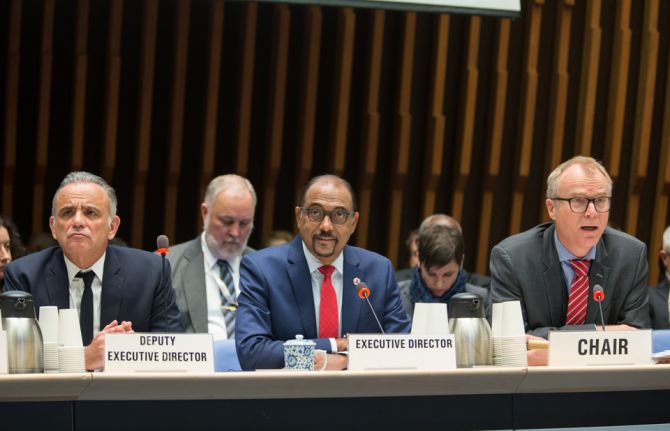
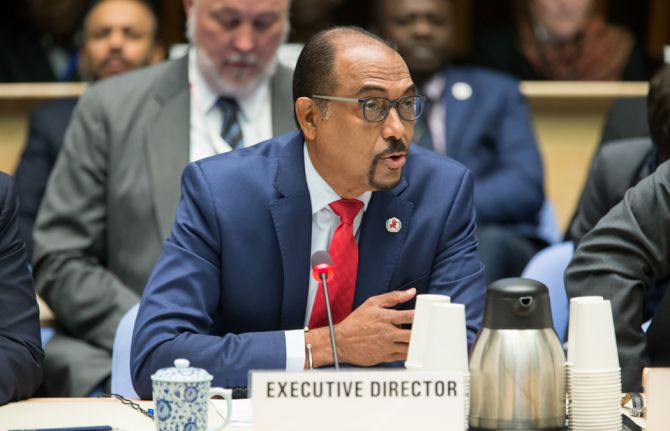
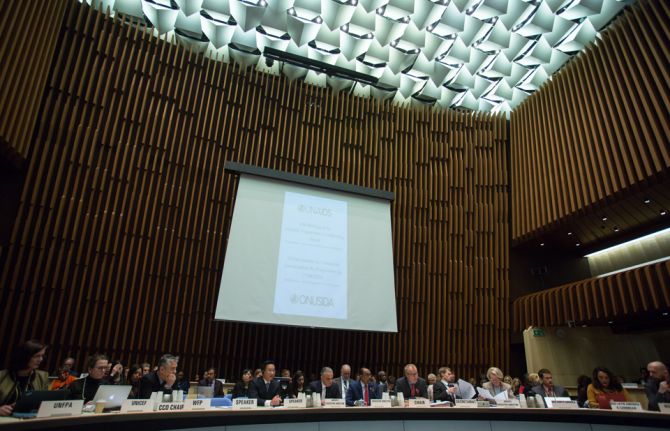
Update
39th meeting of the UNAIDS Programme Coordinating Board opens
06 December 2016
06 December 2016 06 December 2016The 39th meeting of the UNAIDS Programme Coordinating Board is taking place in Geneva, Switzerland, from 6 to 8 December.
During the opening session, UNAIDS Executive Director Michel Sidibé gave an update on the progress made in the AIDS response and outlined the challenges and opportunities that lie ahead.
Mr Sidibé spoke about the need to properly fund the AIDS response, especially civil society, in order to put the world on the Fast-Track to end the AIDS epidemic by 2030 as part of the Sustainable Development Goals. He also stressed the need to focus on HIV prevention and to provide adequate HIV services to key populations at higher risk in order to leave no one behind.
The thematic segment of the meeting will take place on the last day and will focus on the state of the epidemic among people living with HIV and at risk of acquiring HIV aged 50 and above, the impact of ageing with HIV, including for key populations and women living with HIV, and identify areas of health and social sector responses for people aged 50 and above.
The 39th meeting of the UNAIDS Board is being chaired by Switzerland, with Ghana acting as Vice-Chair and Ecuador as rapporteur.
Related

Update
Training on age of consent manual piloted in Zimbabwe
09 December 2016
09 December 2016 09 December 2016“Age of consent: my body, my rights”, “Rights have no age” and “#Sex happens” were some of the creative advocacy messages that young people came up with during the pilot training on an age of consent advocacy manual that took place in Harare, Zimbabwe.
As part of the All In partnership to end adolescent AIDS, UNAIDS and the PACT, a global coalition of 25 youth-led and youth-serving organizations and networks working on HIV, developed a comprehensive advocacy manual on age of consent policies that relate to the sexual and reproductive health and rights of youth and adolescents. The manual seeks to provide youth advocates with the skills and information they need to respond to legal barriers, specifically age of consent laws and policies related to sex, HIV and sexual and reproductive health services.
As stated in the UNAIDS Prevention gap report, “In many settings, parental and other third-party consent requirements for access to HIV and sexual and reproductive health services remain an important barrier to their uptake. Adolescents often are reluctant to seek services that require the consent of a parent or guardian. Similarly, laws that restrict people’s access to health services—for example, by requiring third-party authorization for accessing sexual and reproductive health services or by criminalizing certain consensual sexual behaviours—exclude people from the health information and services they need”.
The piloting of the manual in Zimbabwe was facilitated by Youth Engage, a youth-led advocacy organization that brought together 25 youth advocates from diverse backgrounds.
Young people, with support from the National AIDS Council of Zimbabwe, are now mobilizing and preparing for a dialogue with parliamentarians to discuss the age of consent laws on marriage, sex and HIV testing in Zimbabwe and young people’s access to sexual and reproductive health services.
The manual will soon be piloted in India and will become a key resource for advocates to challenge legal and policy barriers that pose obstacles for young people’s access to HIV and sexual and reproductive health services all over the world.
Quotes
“We advocate to policy-makers because we want them to hear public opinion, and young people are the public opinion on this issue.”
“Through the activities and discussions around the impact of legal barriers on youth and adolescent health, young persons were able to freely explore the issue and craft ways in which age of consent issues could be tackled.”
“To generate demand for HIV and sexual and reproductive health and rights services, country programmes need to revise the current ineffective and inadequate laws and policies that exist and act as a barrier to young people’s access to services, such as age of consent laws.”
Resources
Region/country

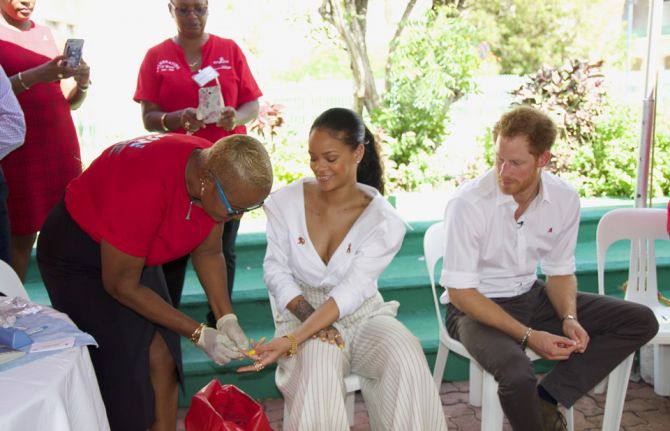
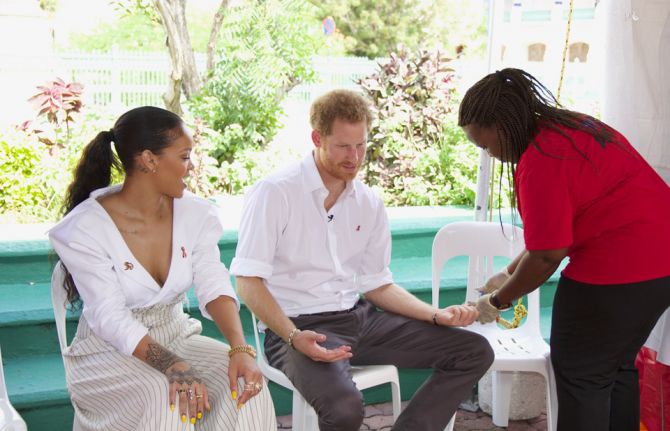
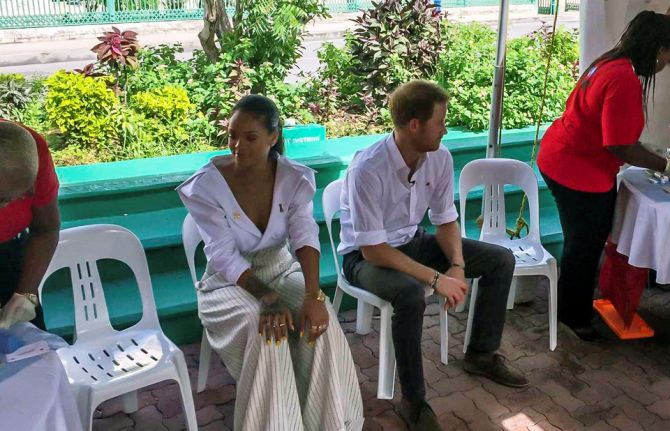
Update
Barbados World AIDS Day Man Aware campaign raises HIV awareness among men
07 December 2016
07 December 2016 07 December 2016On World AIDS Day, Prince Harry and Rihanna showed the people of Barbados and the world how simple it is to learn your HIV status.
“That was not bad,” Rihanna said as Prince Harry looked on from the bench next to her in Heroes Square, Bridgetown.
“It’s a pin prick,” he agreed.
Prince Harry and Rihanna were at the Man Aware event hosted by the Barbados National HIV/AIDS Commission. Here, the message that HIV testing is quick and easy is important for everyone, including boys and men—in Barbados, more than 85% of AIDS-related deaths are among men.
“Men are involved in high levels of risk-taking and present late for testing and treatment,” explained Jacqueline Wiltshire Gay, Director of the Barbados National HIV/AIDS Commission.
Barbados is one of the countries in the Caribbean closest to achieving control of its HIV epidemic and is currently being validated by the Pan American Health Organization for eliminating mother-to-child transmission of HIV. Barbados is also on track to achieving the 90–90–90 targets of 90% of people living with HIV knowing their HIV status, 90% of people who know their HIV-positive status accessing treatment and 90% of people on treatment having suppressed viral loads. To reach the Fast-Track Targets, the country will have to change behaviours among men, who are less likely to get tested early and too often seek medical assistance too late.
Barbados is not alone. In several Caribbean countries, including Antigua and Barbuda, Guyana and Saint Lucia, the HIV epidemic is male dominated. In Trinidad and Tobago, while more females than males are getting tested for HIV, more males are testing HIV-positive. In Belize, according to UNAIDS estimates, more than half (57%) of AIDS-related deaths in 2015 were among males.
But men often don’t think of themselves as being at risk. Although in many countries in the region there are concentrated HIV epidemics among key populations, transmission rates among the general population are also relatively high.
The Barbados World AIDS Day campaign focused on specific strategies to engage, educate and empower men. According to Ms Wiltshire Gay, there is a renewed emphasis on collaborating with civil society organizations to ensure that men are reached.
At the World AIDS Day event, HIV counsellor Fabian Sargeant told Prince Harry and Rihanna that barber shops are excellent places to raise awareness of the need for HIV testing, because men meet there to discuss various aspects of their lives, including sex and relationships. Prince Harry said that while young people want to talk about HIV, there is still a stigma associated with it in the Caribbean. He thinks that if people knew about the advances in testing and treatment, they would be more willing to come forward.
“If you are HIV-positive you can take medication for the rest of your life and have a completely normal life,” he said.
Rihanna agreed, “So many people don’t know how easy it is to get tested and how quick you get your results back and how discreet it could be. Even if you are positive, there’s so much that can be done and the sooner the better.”
Region/country

Update
The importance of HIV care and support services
02 December 2016
02 December 2016 02 December 2016HIV care and support refers to key non-antiretroviral therapy clinical services, the treatment of HIV-related infections and non-clinical services that in combination with antiretroviral therapy contribute towards the reduction of rates of ill health and AIDS-related deaths among people living with HIV.
As access to antiretroviral therapy expands around the world and the number of AIDS-related deaths continues to fall, these services are becoming increasingly important. A new UNAIDS publication, HIV care and support, illustrates how essential these services are, taking into account the World Health Organization’s Consolidated guidelines on the use of antiretroviral drugs for treating and preventing HIV infection.
Care and support is important for the following reasons: to facilitate immediate access to treatment when a person is diagnosed with HIV; to support adherence to treatment in order to attain viral suppression for people living with HIV, for the sake of their own health and to prevent infecting other people with HIV; to enhance the prevention and management of HIV-related infections; and to enhance coping with the challenges of living with HIV.
Quotes
“Access to HIV testing programmes must be expanded so that people who need treatment can be referred immediately and supported to adhere to treatment.”
“Antiretroviral therapy should be provided immediately to people who test HIV-positive alongside comprehensive care and support, counselling and testing, legal, social and economic support, mental health and emotional support and access to contraceptive and health services.”
Publications

Update
World AIDS Day 2016: HIV prevention for young people in Kenya
02 December 2016
02 December 2016 02 December 2016This year’s World AIDS Day commemorations in Kenya—led by the First Lady of Kenya, Margaret Kenyatta, at the Nyayo National Stadium in Nairobi—were dedicated to young people, under the theme “Engage, prevent, celebrate”.
Thousands of young people joined the First Lady to celebrate the end of a presidential campaign to end HIV stigma, especially among adolescents and young people. The nationwide Kick out HIV Stigma campaign leveraged the power of football to mobilize young people to access stigma-free HIV counselling and testing services and HIV messages.
Ms Kenyatta was joined at the event by UNAIDS Deputy Executive Director Luiz Loures. Ms Kenyatta presented trophies to the best performing girls’ and boys’ football teams and county governments that recorded exemplary performance in providing HIV testing and HIV messages to young people. The event also included a concert that engaged Kenyan popular artists to mobilize young people to test for HIV.
HIV is a significant health threat among young people in Kenya. In 2015, 36 000 new HIV infections and 3900 AIDS-related deaths occurred among young people aged 15–24 years. HIV-related stigma remains a significant barrier to many young people accessing HIV counselling, testing and life-saving treatment.
In seven months, the Kick out HIV Stigma campaign reached an estimated 15 million people with HIV messages and provided one-to-one mentorship to more than 3.8 million people and HIV counselling and testing to more than 800 000 people while linking people who tested HIV-positive to treatment.
Quotes
“HIV HAS MADE AN ENEMY OF ALL OF US AND IT IS ONLY WHEN ALL OF US COME TOGETHER THAT WE HAVE ANY HOPE OF FINALLY GETTING TO ZERO—ZERO NEW HIV INFECTIONS, ZERO AIDS-RELATED DEATHS AND AN HIV STIGMA-FREE GENERATION.”
“KENYA IS SETTING THE PACE IN HIV PREVENTION AND KICKING OUT HIV-RELATED STIGMA TO ENSURE AN AIDS-FREE GENERATION.”
“I AM HOPEFUL THAT ALL YOUNG PEOPLE ACROSS THE COUNTRY WILL BE ABLE TO ACCESS STIGMA-FREE HIV SERVICES THANKS TO THE IMPACT OF THE PRESIDENTIAL KICK OUT HIV STIGMA CAMPAIGN.”
Region/country
Related

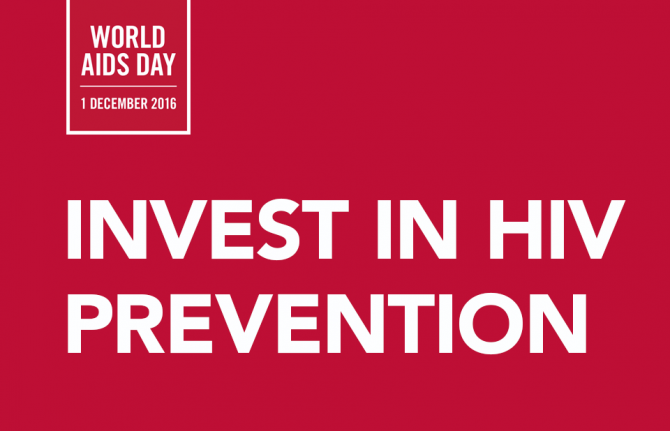
Update
Investment in effective prevention
28 November 2016
28 November 2016 28 November 2016Strengthened global political commitment to HIV prevention must be followed by strengthened financial commitment. The successes of the global AIDS response to date have been fuelled by extraordinary investment. The total amount of financial resources for AIDS responses in low- and middle-income countries reached an estimated US$ 19 billion in 2015, double the amount of resources available in 2006. However, international funding for in-country services in 2015 declined for the second year in a row to US$ 8.2 billion—a 7% reduction from the US$ 8.7 billion in 2014. Public and private domestic investment increased by US$ 0.4 billion over the same period, resulting in approximately similar total resource availability in 2014 and 2015.
Available data show that investments in HIV prevention have slightly increased over time in a number of countries. However, more rapid increases in expenditures for HIV treatment translate to a declining trend in the percentage of total resources dedicated for a wide range of prevention services, including the prevention of mother-to-child transmission, reaching about 20% in recent years—short of the commitment made within the 2016 Political Declaration on HIV and AIDS to ensure that financial resources for HIV prevention are adequate and constitute no less than a quarter of AIDS spending globally.
Hands up for #HIVprevention — World AIDS Day campaign

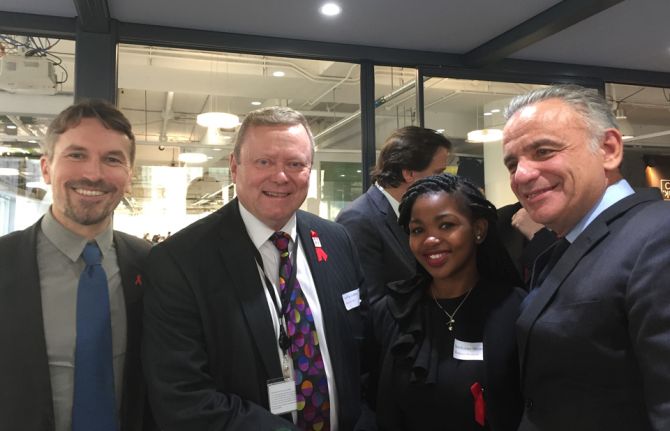
Update
Refuelling the global HIV response: the role of the United Kingdom
30 November 2016
30 November 2016 30 November 2016On the eve of World AIDS Day, STOPAIDS, with support from the United Kingdom All-Party Parliamentary Group on HIV & AIDS, organized an event to discuss the role of the United Kingdom in the global AIDS response.
The participants discussed the role that the leadership of the United Kingdom, one of the largest donors to the international response to HIV, can play in keeping the response on the right trajectory to realize the UNAIDS Fast-Track Targets and ultimately end AIDS as a public health threat by 2030.
Opening the event, Lord Bates, Minister of State at the Department for International Development, took stock of the United Kingdom’s contribution to the global AIDS response to date and the steps the country needs to take to end the AIDS epidemic by 2030.
The participants stressed the need for greater focus and support for key populations at higher risk of HIV infection, ensuring that no one is left behind. Improving access to services for all people, harnessing technology and innovation to scale up and extend services and putting people at the centre by moving towards more integrated services were some of the key areas identified to take the response forward.
UNAIDS emphasized the need for continued political and financial commitment, and stressed that although significant progress has been made in the AIDS response, there is still a financial gap of US$ 6 billion that urgently needs to be addressed.
UNAIDS Deputy Executive Director Luiz Loures, Lord Collins, Shadow International Development Spokesperson in the House of Lords, Anne Aslett, Executive Director of the Elton John AIDS Foundation, and Ndaba Mandela, founder of the Africa Rising Foundation and Mandela Project, were among the participants.
Quotes
“We know what is at stake—we invest our resources now, or we risk facing a resurgence of an epidemic that will take a human societal and financial toll that none of us can possibly bear. It is that simple.”
“We are going to lose the gains we have achieved so far unless we continue to scale up funding and reach people.”
Region/country

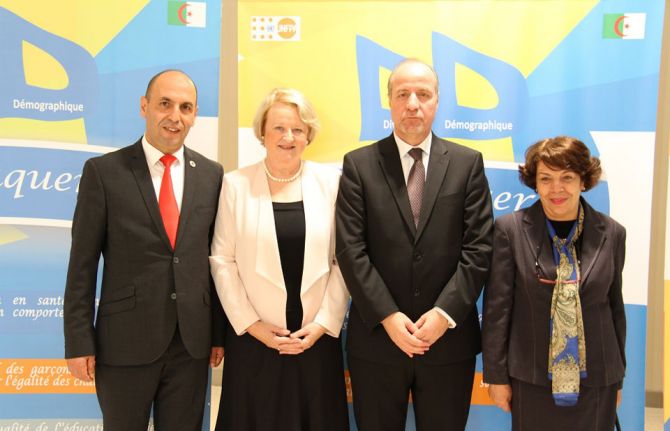
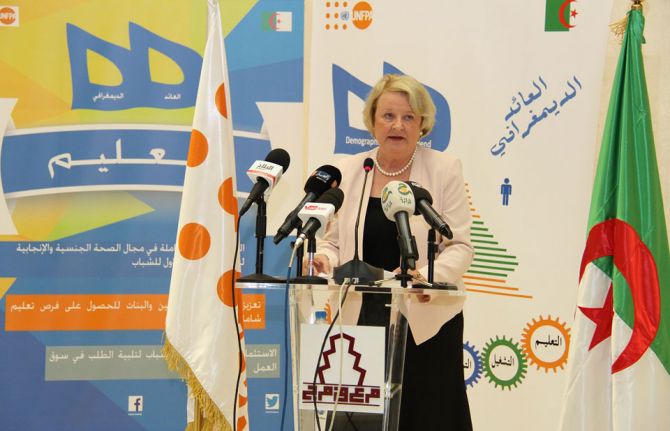
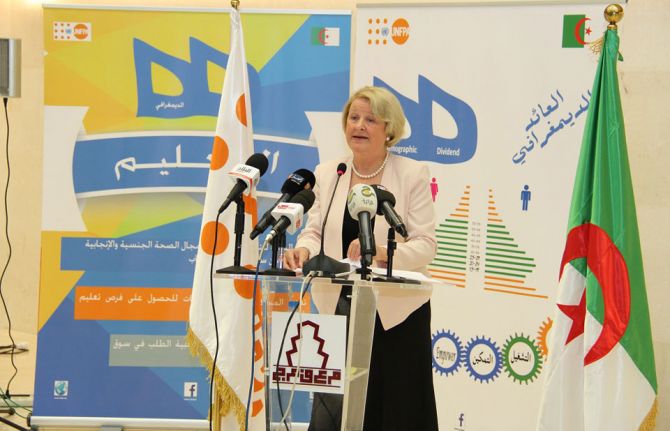
Update
Middle East and North Africa: HIV lessons can guide development responses for young people and women
30 November 2016
30 November 2016 30 November 2016At a regional forum focusing on optimizing the demographic dividend in the Middle East and North Africa, lessons learned from the AIDS response were emphasized as critical to guiding investment and efforts for development responses for young people and women.
Representatives of government, international organizations, civil society, the media and others joined together in Algiers, Algeria, for a two-day forum organized by the United Nations Population Fund, the League of Arab States and the Government of Algeria. The forum explored how economic growth, comprehensive education and health and social systems that put young people and women at the centre can result in lower maternal mortality, higher life expectancy and gains across the Sustainable Development Goals.
UNAIDS Deputy Executive Director Jan Beagle opened the forum, emphasizing that the experiences of the multisectoral, multistakeholder and inclusive AIDS response can be leveraged for wide-reaching results.
“By investing in girls and young women, boys and young men at the critical stages in their lives, and building coalitions across sectors, we can end AIDS by 2030 and contribute to broader health, development, rights and gender outcomes in the region,” Ms Beagle said.
Ms Beagle stressed the importance of prioritizing awareness-raising and education among young people, ensuring a specific focus on women and girls and increasing synergies between health and development responses, including for tuberculosis, human papillomavirus and hepatitis C.
To address stigma and discrimination in the region, which hampers access to services, legal and policy environments need to promote change and protect the vulnerable and to enable the effective implementation of laws and policies. “The laws on the books need to be mirrored by the laws on the streets,” Ms Beagle said.
Political commitment for the AIDS response is growing in the region, but challenges persist, including in terms of low treatment coverage, preventing mother-to-child-transmission of HIV and the increase in HIV infections in some communities. The renewed political commitment expressed at the forum can help to counter those challenges.
Region/country
Related
 Government ensures continuity of treatment in Malawi
Government ensures continuity of treatment in Malawi

10 February 2025

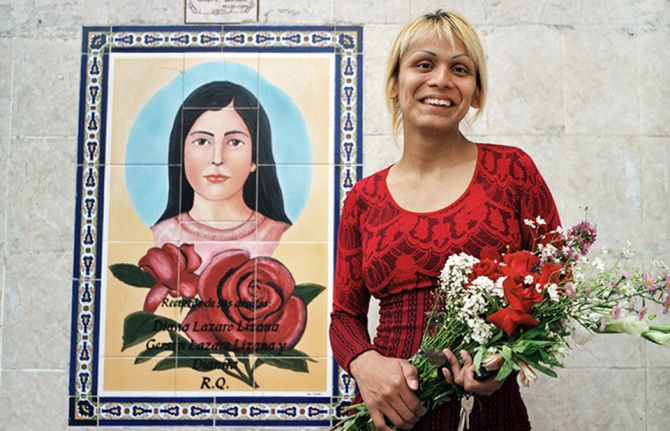
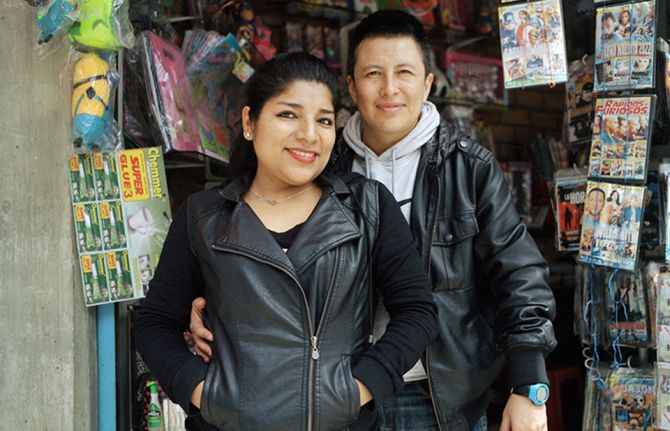

Update
Preventing HIV among transgender women in Lima
24 November 2016
24 November 2016 24 November 2016Transgender women face significant barriers that limit their access to health services and/or increase their vulnerability to HIV: stigma and discrimination, gender-based violence and gender inequities. As a result, the percentage of transgender women reached with HIV prevention and treatment services is very low.
To address the HIV prevention gap for transgender people, the Peruvian Ministry of Health organized a national consultation on combination HIV prevention in 2014 in partnership with Cayetano Heredia University and UNAIDS. This consultation opened a dialogue between stakeholders and community leaders on the future of HIV prevention in Peru. During the consultation, the Ministry of Health expressed its commitment to improve HIV combination prevention programming for transgender women. In 2015, it launched a targeted strategic plan for prevention and comprehensive care for HIV and other sexually transmitted infections (STIs) for transgender women .
The plan addresses the leading causes of the HIV epidemic among transgender women in Peru, including their poor socioeconomic conditions, their difficult living and working environments and the low accessibility of health services. In the plan, consideration is given to identifying effective strategies to respond to specific legal and human rights challenges, stigma and violence. The development of the plan was the result of a decade-long process of evidence generation, policy dialogue and capacity-building with the transgender community.
The plan is being translated into practice. Activities already implemented include special trainings of health personnel at STI treatment centres and community peer educators in how to address the HIV needs of transgender people, the provision of prevention services, including condoms and lubricants, HIV testing and linkage to health services for antiretroviral therapy and awareness-raising of local law enforcement personnel on the respect of human rights and prevention of gender-based violence for the transgender community.
Mao, a transgender women activist and peer educator of the Ministry of Health, said, “The focused plan is bringing services closer to the community. Some transgender women who could not go to the sexually transmitted infection treatment centres are now asking for condoms and testing, for information and for comprehensive health services. We are proud of being part of this initiative.”
The next phase of the transgender health plan will include an increase in the number of decentralized prevention and treatment service sites and a demonstration study on pre-exposure prophylaxis. The plan will be incorporated into and aligned with the national HIV programme.

